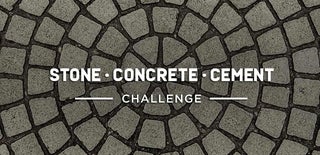Introduction: Concrete Tree Fountain - Faux Bois
In this instructable, I show you how to make a water fountain with an original design that inspired by nature. I tried to make the shape of the fountain look perfectly like a real tree. This technique is called "Faux Bois" that refers to the artistic imitation of wood or wood grains in various media. It’s fun to make and you can use it as an awesome decoration indoor or in your garden.
Supplies
- Bucket 10 liters,
- Vacuum hose 2 1/2" (40 cm),
- Steel wire 1mm: 2m
- Fine mesh 0,5mm: 4m
- Sand: 3kg
- Ordinary Cement: 8kg
- Acrylic Paint: Link
- Epoxy Resin + Hardener: 70g
Tools :
Step 1: Basic Shape - Basin
I start by drawing a wavy line at a distance between 4 to 8cm from the top edge of the bucket. Then we cut this piece using a cutter. Be sure to use a new cutter to facilitate this operation.
Step 2: Basic Shape - Tree Branches
To make the branches of the tree, please follow the following steps:
- Cut the vacuum cleaner hose to lengths 50cm and 65cm,
- Make four 2mm diameter holes on each side of the bucket, I used a soldering iron to make these holes and you can use any drilling tool.
- Secure the two hoses with the two sides of the bucket using the metal wires.
- To prepare the fixing of the two hoses between them, cut a piece of 4 cm in diameter, and then tie the two with metal wires.
Step 3: Cover With Metallic Fine Mesh
Using the metallic fine mesh I cover the entire basic shape that has been made. This step is very important, it is to allow the cement to stick to the basin and the tree branches in the next step. that's why I started to cover the whole bucket from the outside to the inside as well as the hoses. Do not forget to drill a 10mm hole in the right branch, it will be the first point of the water flow.
Step 4: Making Water Pockets
For each pocket of water, I start by preparing a multi-layered square (6 layers) of dimensions 15x15cm from the metallic fine mesh. I cut in a parabolic way between two vertices of the square. After, I cut a slit of length 4cm according to the way presented by the attached photos. First I use hot glue to glue the pockets to the tree branches and second I use the wire to attach them perfectly. I chose to leave a distance of 10cm between two successive pockets.
Step 5: Cover With Concrete
All the work with concrete was carried out with a mixture whose ratios are as follows:
2,5 cups Cement + 1 cup sifted Sand + Water.
I start with the application of the first layer of concrete. The concrete mixture of this step is less viscous, that is to say, an excess of water is added to this mixture. After 24 hours of drying, we can move on to the application of the second layer of concrete. The concrete mix of this step is with a small amount of water. This step consists of adding all the necessary details like stones, wood grains, etc. Remember to spray a little water on each dry area before applying fresh cement.
The best tool to sculpture the concrete before its completely dried is the Painting Palette Knives.
Step 6: Paint
After the concrete has completely dried, I start by cleaning the project and removing the dust from the cement using a dry brush. I used acrylic paint for its ability to resist more humidity.
Step 7: Coat With Epoxy Resin
Adding epoxy resin to a painting or art piece enhances the colors and gives the piece a glossy, clean finish. A clear coat of resin also provides added protection from general wear or scratches. Although the results glisten for themselves, the process requires patience, preparation, and care. In our project, epoxy resin is also used to hardening, waterproof, and prevent leakage.
You need 2 disposable cups for mixing, Stirring popsicle, Gloves, Protective eyewear, and brush.
Make two coats of resin spaced 24 hours apart for drying.
Step 8: Pumping System
For the circulation of water and to operate the fountain, we need a submersible mini-pump, a PVC tube of the same diameter as the pump (6mm), and a universal AC / DC 3-12v adapter for the variation of the water flow.
- Insert the tube from the 10mm hole,
- Connect the pump with the tube,
- Connect the two electric wires of the pump to the AC / DC adapter
- Turn on the AC / DC adapter.
The white mini-pump that I used in this experiment is a test pump that has a short lifespan. I advise you to use a brushless pump like the one described in this link. This pump has a longer lifespan and can work directly without converter AC/DC.
Step 9: Start-up
To put the fountain into operation, it is necessary to start by pouring a quantity of 2 litres of water into the basin. We turn on the 3-12V adapter and I varied the voltage from 3 to 6V until the best flow is reached. If you have tried with the mini brushless USB pump and the flow generated is good, then you don't need the AC / DC adapter.
To use the fountain outdoors, be sure to better protect the wires and electrical connectors from the rain.
Enjoy the video tutorial 👉 Link

Runner Up in the
Stone, Concrete, Cement Challenge













